Harley-Davidson Museum Grand Opening
You’ve all heard the old joke that goes like this: “Half of all Harley-Davidsons ever made are still on the road – the other half made it home safely!” (Rim shot.) Well, thanks to the new Harley-Davidson Museum, at least one bike from every one of the 105 years that Harley has been making motorcycles has a safe and secure place to come home to. And the millions of other Harleys that are in service can also come home to this newest Milwaukee attraction and feel like they’re part of the family.
It’s been about five years since The Motor Company began floating ideas about building a museum to house and showcase their huge collection of motorcycles and memorabilia, which at the time begged the question, “What the heck took you so long?” After all, sometime in the mid-1980s Harley-Davidson was becoming known as the Milwaukee Mint, as sales of motorcycles and their licensed clothing and products began to build double-digit sales increases every year, and they were making money hand over fist.
In any case, 20 acres of land was purchased in early 2005, along the Menomonee River east of downtown Milwaukee, a mere 3 miles from the site of the original garage behind the home of the Davidson brothers where the first motorcycles were built. Construction was begun about 2 years ago, culminating in the $75 million Museum’s Grand Opening on July 12. Last week, Harley-Davidson invited a large group of journalists to take a pre-opening tour of the Museum grounds and exhibits, and it was an excellent experience for all.
Museum Director, Stacey Schiesl, began the festivities by explaining the purpose of the Museum. “First, we want to build and strengthen the bonds with out customers and riders. Then we want to reach out to new people to promote the feeling of the brand and the riding experience. Last, we want to not only showcase the bikes, but also the people who rode them in the past, and ride them today”
Harley-Davidson commissioned architect Jim Biber of New York-based Pentagram Design to create an industrial looking campus where the steel frame would be an exposed exoskeleton, similar to the exposed frame of a motorcycle. The expansive use of glass would not only let in light, but provide an open backdrop to the street where motorcycles live their lives. And the 60-foot wide streets around the three buildings were designed to park motorcycles “Sturgis Style”, meaning nose-to-nose in the middle of the street and single-file on each edge of the street. There is space to park 1,000 motorcycles and 500 cars.
One building is the Museum proper, housing all the exhibits, with a second windowless and climate-controlled building that houses the rest of the Harley archives and bikes that are not on display. That building is not open to the public.
The third building houses meeting rooms, party rooms, restaurants, and, of course, a large retail store where visitors will be able to purchase Harley-Davidson clothing and souvenirs, many that will be unique to the Museum store. H-D has already booked weddings and private parties for that building, and plans to be able to hold convention meetings, dealer meetings, and draw other non-motorcycle events to the site. All three buildings are connected by glass walkways. The surrounding park-like setting can also accommodate 15,000 people for concerts and special events and is always open to the public, even when the museum is closed.
If the industrial look was what Harley-Davidson was aiming for, they really hit the mark. I’m no architectural critic, but to my taste the building is quite stark, boxy, and drab looking. The exoskeleton looks like something created by an Erector Set. Contrast that with the now iconic and inspiring Milwaukee Art Museum building just up the road, and the Harley Museum architecture just disappoints. But even if you don’t like the cover of this book, once inside visitors will be delighted.
Before entering the Museum, most visitors will be drawn to a large bronze statue rising from the central “Main Street” between the buildings. Titled “Dynamic Hill Climber,” it was sculpted by noted motorcycle artist Jeff Decker and was commissioned and donated by Nancy and Willie G. Davidson. The motorcycle that inspired the bronze can be seen inside the Museum.
'...more than 150 American motorcycle manufacturers came and went. Harley-Davidson is the last survivor, and they’ve been alone since 1953...'
The Museum is set up as a time-line tour which begins on the second floor, so visitors can trace the history of Harley-Davidson from the first motorcycle to the present. But the exhibits are more than just a line of motorcycles. Photographs, trophies, clothing, advertising materials, magazine covers, dealer signage and all manner of items flesh out the time period that the motorcycles were used in and puts them in an appropriate context.
Even though it took 105 years to build a museum, it is obvious that the founders and all of the subsequent CEOs and executives were very aware of the historical significance of the Harley-Davidson company, their motorcycles, the lifestyle and the impact that the company had on American life. They had the foresight to save motorcycles from each year of production (or acquire the ones they needed to fill in the few gaps) as well as all of the corporate documentation and the huge amounts of memorabilia that tell the story of this historic company.
Note that during the 105 years of H-D’s existence, more than 150 American motorcycle manufacturers came and went. Harley-Davidson is the last survivor, and they’ve been alone since 1953 when Indian shuttered its factory. Despite current economic times, I’m confident that The Motor Company will thrive for decades to come, and when my grandchildren are old and gray, they’ll be able to visit this museum, too.
Of course, I’m sure it will be expanded, and perhaps they’ll ride there on Harley-Davidson rocket-powered sleds. But I’ll bet that regardless of what will power Harley-Davidsons in the future, they’ll somehow be able to work in the “potato-potato” sound that will always be part of the company’s heritage.
To get more information about the Museum hours of operation, ticket information, directions, and other general information, visit the Harley-Davidson website.
Now let’s take a look at some of the bikes and exhibits that a visitor can view as they tour the Museum. Click on the Photo link below.
Related Reading
H-D announces museum grand opening
Harley’s 105th Anniversary Party
First quarter sales down for H-D
H-D museum offering memberships
More by User




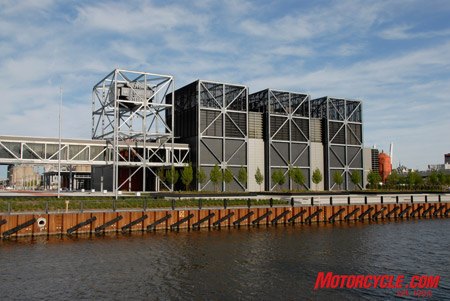











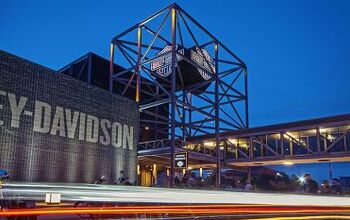
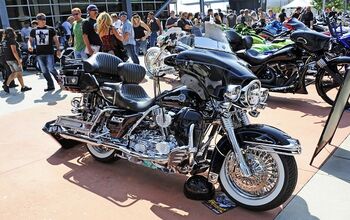
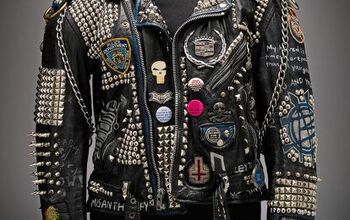
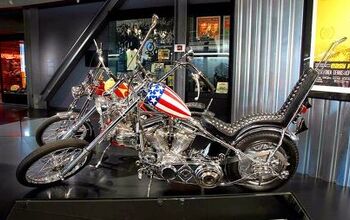
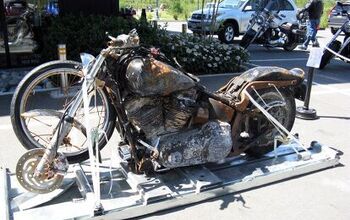













Comments
Join the conversation